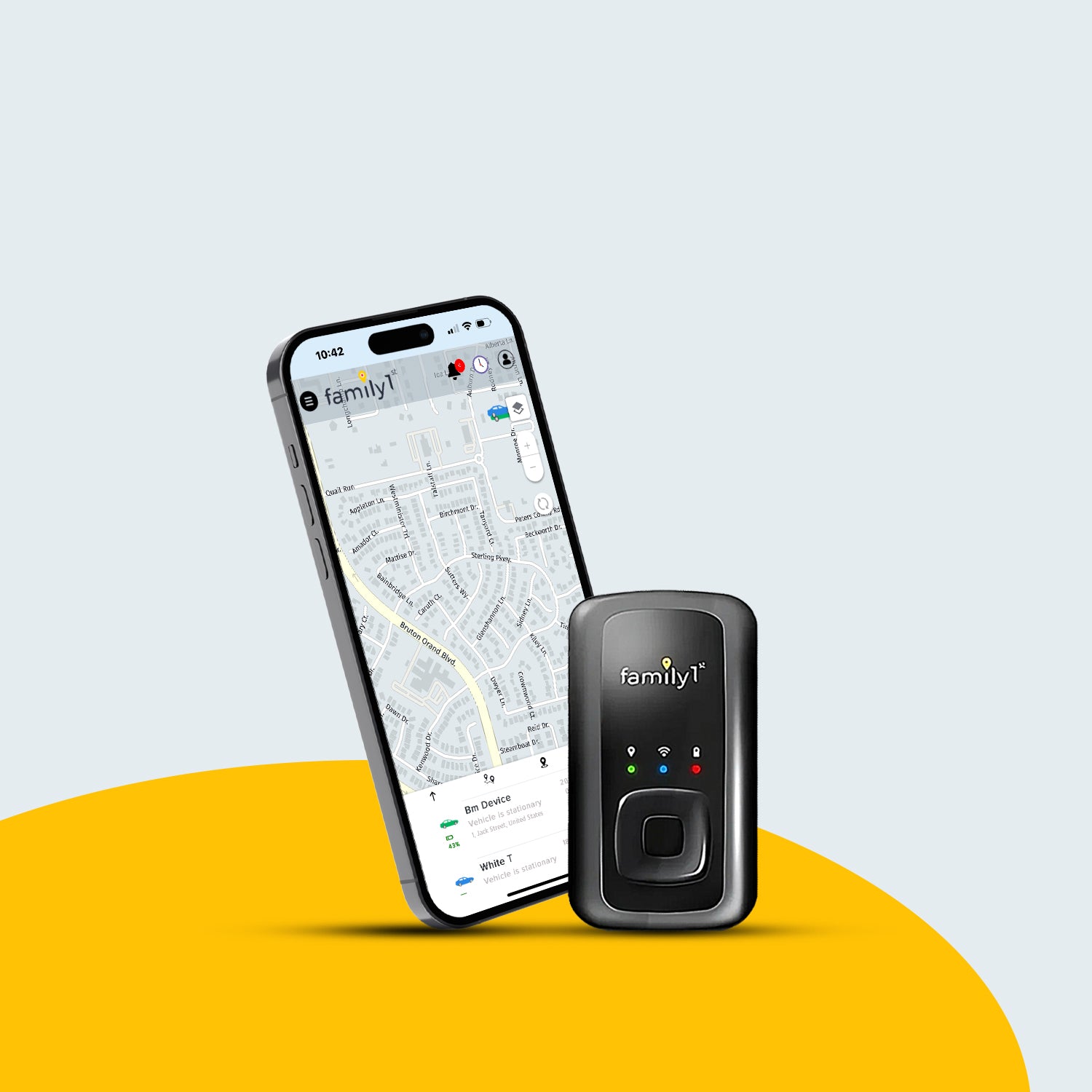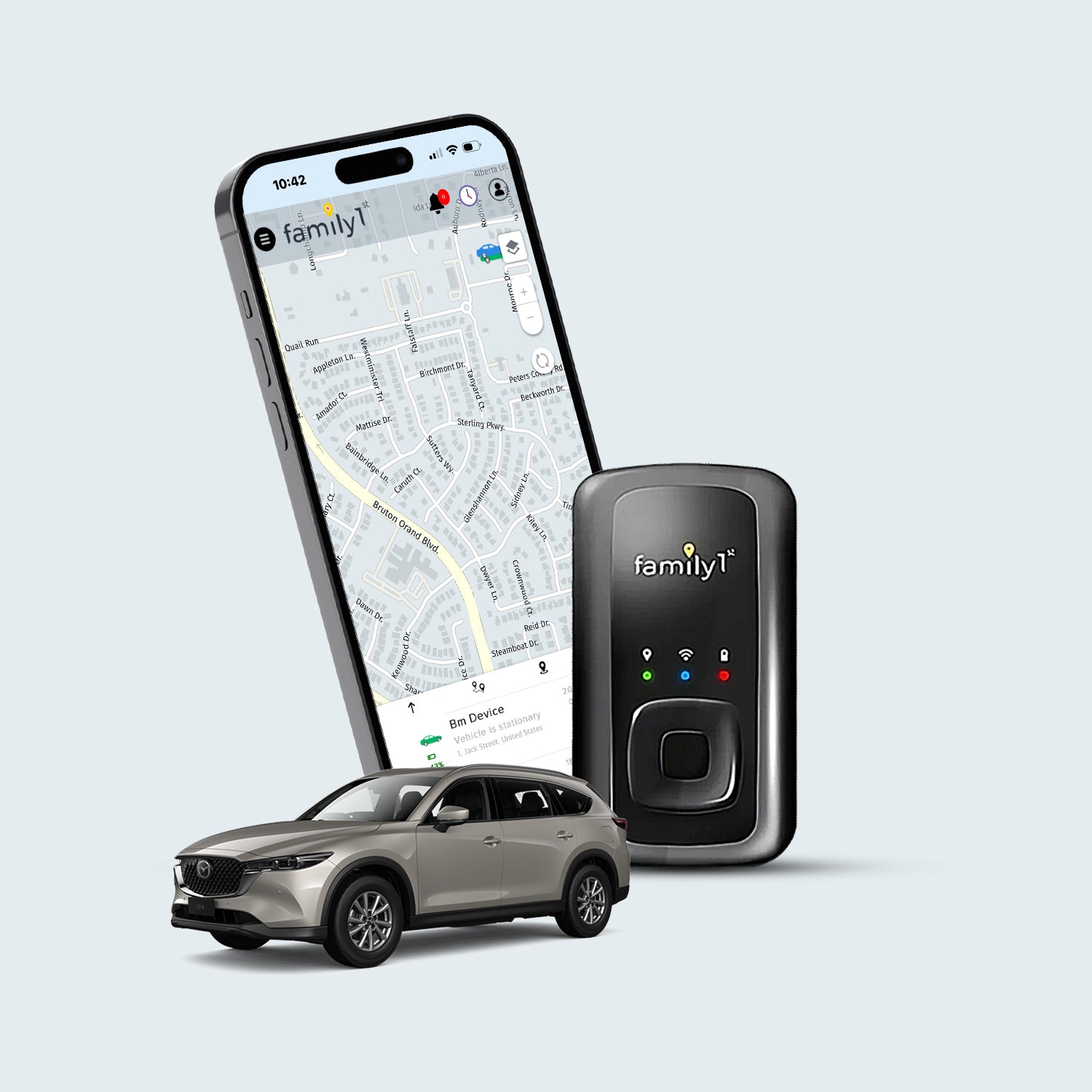Check your car’s exterior and interior for a hidden GPS tracker, especially in spots like the undercarriage, wheel wells, and dashboard. Use a flashlight and mirror to inspect hard-to-reach areas, and a GPS detector if you suspect an active signal.
If you find a tracker, remove it based on its type, magnetic trackers pull off easily, plug-and-play devices unplug from the OBD-II port, and hardwired ones need careful disconnection. If the tracker was placed without your consent, keep it as evidence and report it if necessary.
What Are Car Trackers and How Do They Work?
Car trackers are devices that use GPS technology to monitor a vehicle’s location in real time or store movement history. They work by receiving signals from satellites and sending the data to a connected device like a phone or computer.
These trackers are powered by either a built-in battery or the car’s electrical system, ensuring continuous operation. They are commonly used by businesses for fleet management, law enforcement for surveillance, and individuals for security or navigation.
Read more about: What Is GPS & How Do GPS Trackers Work?
Types of Vehicle GPS Trackers
Magnetic Trackers
Magnetic trackers stick to a car’s surface using strong magnets and run on batteries. They are often placed under the vehicle or in hidden spots for discreet tracking.
Plug-and-Play Trackers
Plug-and-play trackers connect to the OBD-II port and start working instantly. They provide real-time tracking and vehicle diagnostics without needing installation.
Hardwired Trackers
Hardwired trackers are connected to the car’s electrical system for continuous power. They are hidden inside the vehicle, making them hard to detect and remove.
How Do You Tell If Your Car Is Being Tracked?
Battery Drains Faster Than Usual
If your car’s battery is losing power quicker than normal, a tracker might be drawing energy even when the car is off. This is more noticeable if the battery was fine before.
Strange Signal Interference
If your radio, Bluetooth, or calls inside the car keep cutting out or getting static, a hidden tracker could be sending signals. This happens even when you're in areas with strong network coverage.
Someone Knows Your Location Too Often
If a person or group repeatedly shows up where you are without being told, they could be tracking you. This is a major red flag if it happens in multiple places.
Unusual Changes in Your Car
Loose panels, unfamiliar wires, or small unknown devices inside or under your car could mean a tracker was installed. Any changes you didn’t make should be checked.
A Car or Person Keeps Appearing Nearby
If you often notice the same vehicle or person around you, they might be tracking your movements. This is even more concerning if it happens at different locations.
How to Find a GPS Tracker on Car?
If you suspect a GPS tracker is hidden in your car, a thorough inspection is necessary. These devices can be placed inside or outside the vehicle, making them difficult to spot without a methodical search. Follow these steps to locate any hidden tracking device.
Gather the Right Tools
Before starting, have these tools ready:
-
Flashlight: Helps you see in dark areas inside and under the car.
-
Telescoping Mirror – Helps inspect hard-to-reach spots like the undercarriage.
-
Screwdriver or Panel Remover – Used to open dashboard panels and hidden compartments.
-
Inspection Camera – Useful for looking into tight spaces where a tracker may be hidden.
-
GPS Signal Detector – Scans for active trackers that transmit location data.
-
Magnetic Field Detector – Identifies magnetic trackers attached to metal surfaces.
These tools improve your chances of finding a hidden tracker efficiently.
Check the Exterior of Your Car
Many trackers are placed outside for easy access and a clear GPS signal. Inspect these areas carefully:
-
Undercarriage: Use a flashlight and mirror to check for magnetic devices attached to metal surfaces.
-
Wheel Wells: Look inside and behind liners for unusual objects or loose wires.
-
Bumpers: Examine small gaps and inside bumper covers for hidden devices.
-
Roof and Antennas: Inspect around roof racks and antennas for anything unusual.
-
Exhaust System: Check metal surfaces near the muffler and exhaust pipe for foreign objects.
Magnetic trackers are small and easy to miss, so inspect thoroughly.
Search Inside the Vehicle
If no tracker is found outside, check inside the car. Some trackers are wired into the vehicle or disguised as everyday accessories. Focus on these areas:
-
Dashboard and OBD-II Port: Many trackers connect to the car’s power system through the OBD-II port or behind the dashboard. Look for unfamiliar devices or added wiring.
-
Under Seats and Floor Mats: Small trackers can be hidden in seat frames or under carpets.
-
Glove Box and Storage Compartments: Some tracking devices are tucked into storage areas.
-
USB Ports and Power Outlets: Certain trackers look like phone chargers or adapters.
Take your time and check each area carefully to avoid missing a hidden device.
Inspect the Engine Compartment
Hardwired trackers can be installed under the hood, blending in with existing wiring. Focus on these areas:
-
Battery and Fuse Box: Look for extra wires or small attached devices.
-
Wiring Harness and Firewall: Some trackers are connected to major electrical lines near the firewall.
Be cautious while inspecting to avoid disturbing critical components.
Use a GPS Detector
If you can’t locate a tracker visually, a GPS signal detector can help. These devices scan for active trackers that transmit real-time location data.
-
RF Detectors: Identify radio signals from trackers sending data.
-
Magnetic Field Detectors: Detect unusual magnetic fields on metal surfaces where trackers may be attached.
Move the detector around the car, focusing on high-risk areas like the undercarriage, dashboard, and bumpers. If a signal is detected, inspect the area closely.
What If You Can’t Find a Tracker?
If you suspect tracking but don’t find a device:
-
Monitor your vehicle for unusual battery drain or unexpected interference with electronics.
-
Check for suspicious behavior, such as unknown individuals frequently appearing near your location.
-
Seek professional help from a mechanic or vehicle security expert for a thorough inspection.
How to Remove a GPS Tracker from Your Car?
If you’ve found a GPS tracker on your vehicle, it’s important to remove it safely without damaging your car or triggering any alerts. Follow these steps to ensure proper removal based on the type of tracker.
Confirm the Purpose of the Tracker
Before removing the device, verify whether it was placed legally.
-
Contact your insurance company, employer, or leasing agency to check if the tracker is authorized.
-
Removing a legitimate tracker could result in penalties or void certain agreements.
-
If the tracker is unauthorized or placed without your consent, proceed with removal.
Remove the Tracker Based on Its Type
Magnetic Tracker
These are standalone devices often attached with magnets or adhesive.
-
Carefully detach the tracker from the surface, such as the undercarriage, bumpers, or wheel wells.
-
Inspect the area to ensure no wires, antennas, or secondary devices remain.
Plug-and-Play Tracker
These plug directly into the OBD-II port under the dashboard.
-
Firmly unplug the tracker from the port to stop it from transmitting location data.
-
Check the surrounding area for extra components like small batteries, antennas, or hidden extensions.
-
Some trackers have a backup battery, meaning they may continue transmitting for a short period after removal.
Hardwired Tracker
These are connected directly to the car’s electrical system, making removal more complex.
-
Turn off the car’s power by disconnecting the battery to prevent electric shocks or short circuits.
-
Use a screwdriver or wrench to detach any wires connected to the OBD-II port, ignition system, or battery.
-
Avoid cutting wires unless necessary, as it may disrupt your car’s electrical functions.
Secure the Device for Evidence
If the tracker was placed without your consent, store it properly in case it’s needed for legal action.
-
Do not tamper with the device or attempt to dismantle it.
-
Place it in an anti-static bag or a sealed container to prevent damage or interference.
-
Document where you found it and take photos before removal in case you need proof.
Seek Professional Help if Needed
If you’re unsure how to safely remove a hardwired tracker or notice complex wiring, consult an expert.
-
A mechanic or security specialist can properly disconnect the tracker without damaging your car.
-
Removing the wrong wires could trigger alerts or cause electrical malfunctions.
Is It Legal to Track a Vehicle?
Tracking Your Own Vehicle
If you own the vehicle, tracking it is legal for security, fleet management, or monitoring purposes. Employers can also track company-owned vehicles but must inform employees and use tracking only for work-related reasons.
Tracking Someone Else’s Vehicle
Tracking a vehicle you don’t own without permission is usually illegal and may be considered an invasion of privacy or stalking. Law enforcement requires a warrant in most cases, and unauthorized tracking can lead to legal penalties. Always check local laws before using a GPS tracker.
Frequently Asked Questions
Can GPS trackers be hidden in a car’s wiring?
Yes, hardwired trackers are often installed inside the dashboard, connected to the ignition or battery. These are harder to detect and may require professional help to remove.
Do GPS trackers make noise or give signals?
Most trackers operate silently, but some may emit faint beeps or signals when transmitting data. Using an RF detector can help locate an active tracker.
How can I find a hidden tracker without any tools?
You can perform a manual search by checking common hiding spots like the undercarriage, bumpers, and inside the dashboard. Look for unusual wires or small unfamiliar devices.
Can a GPS tracker be hidden inside a car’s tires?
No, a tracker cannot be placed inside a tire, but it can be attached to the wheel well or suspension system. Checking behind the plastic liner can help uncover hidden devices.
Do GPS trackers need to be connected to power?
Some trackers use an internal battery, while others are wired to the car’s electrical system. Battery-powered trackers are usually attached externally with magnets for easy access.
Can a tracker still work if my car is turned off?
Yes, if the tracker has a built-in battery, it can continue transmitting even when the vehicle is off. Hardwired trackers will stop working if disconnected from the car’s power source.
How long do hidden GPS trackers last?
Battery-powered trackers can last from a few days to several months, depending on usage. Hardwired trackers work indefinitely as long as they receive power from the vehicle.
Can removing a GPS tracker damage my car?
Removing a plug-and-play or magnetic tracker is safe, but disconnecting a hardwired tracker improperly can affect the car’s electrical system. If unsure, seek professional help.
What should I do if I find multiple trackers on my car?
Remove all discovered trackers and check your vehicle regularly for new ones. If unauthorized tracking continues, report the issue to law enforcement.
How often should I check my car for hidden trackers?
If you suspect tracking, inspect your car at least once a month. Frequent checks help ensure no unauthorized device is placed on your vehicle.







